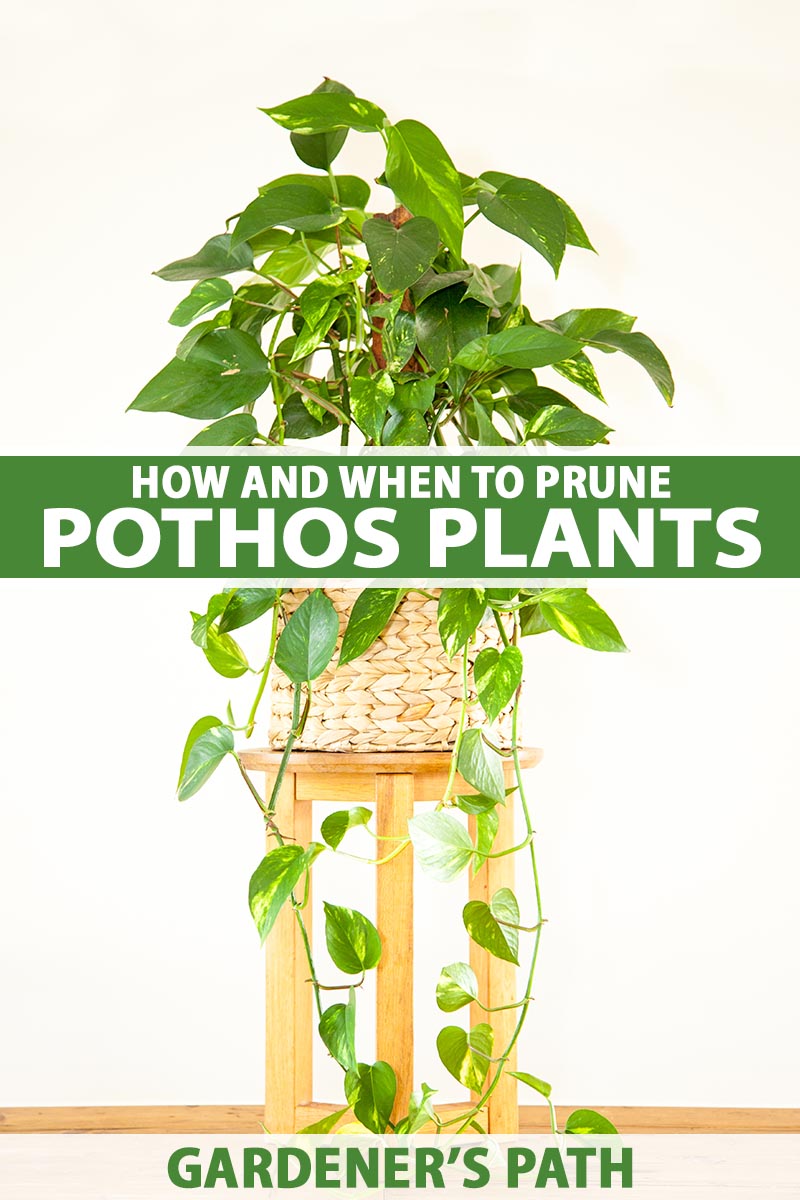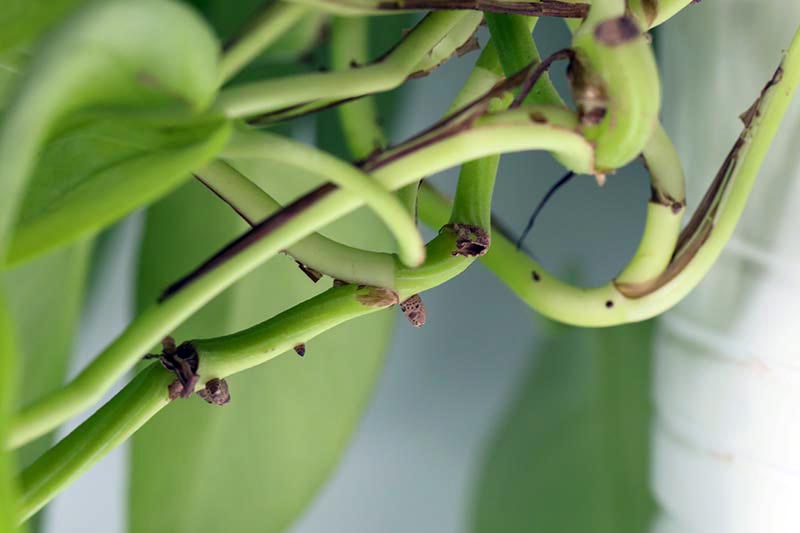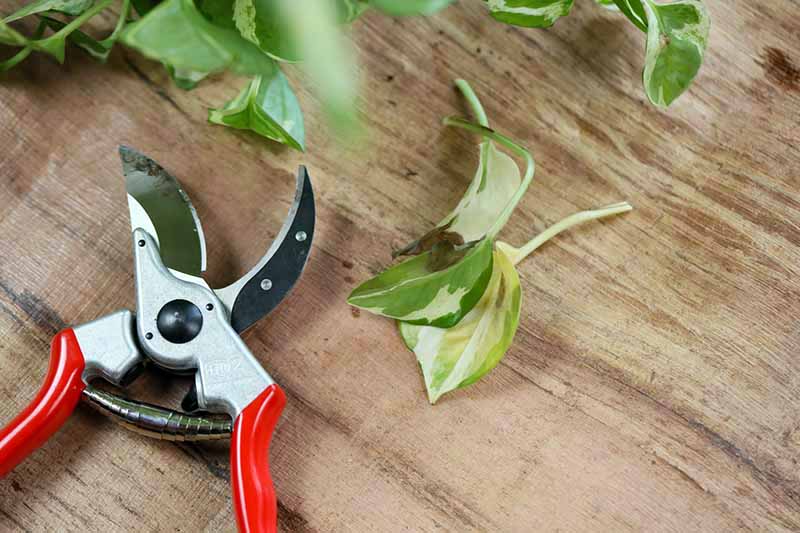How to Properly Prune Your Pothos Plant
If you have a pothos plant, then you know already that they are pretty darn prolific. Maybe even too prolific.
You turn your back and suddenly, there are vines draping down to the floor and crawling across your bookshelves…
That’s when you’ve gotta take matters into your own hands and break out those pruners.


We link to vendors to help you find relevant products. If you buy from one of our links, we may earn a commission.
In order to keep your plant healthy and help it to look as nice as possible, there are a few tips you should keep in mind. That’s what we’ll be discussing in this guide.
Here’s everything you can expect to learn:
How to Trim a Pothos Plant
Before we get started, we need to clarify a few terms first, just to make sure we’re all on the same page.
When we talk about nodes, this refers to the spot where the stem and the leaf meet, or where an aerial root may emerge. The aerial root nodes look like small, brown bumps.
Typically, you want to prune close to one of these nodes because this is where new growth will emerge as well.


The part of the stem in between nodes is known as the internode. And the petiole is the part where the leaf is attached to the stem.
Can’t wait one minute longer or you’ll be buried in a jungle? Then here we go. Get your pruners ready, and let’s start trimming!
When Should I Prune?
Some plants need a lot of pruning, but not your old pal pothos (Epipremnum aureum).
That doesn’t mean they never need pruning, but it’s more of an occasional chore rather than something you need to keep up with regularly.
Now, that said, pothos plants are overachievers. These puppies will grow and grow and grow.
So if you have one that is sending out vines that are looking more like they would be perfect for Tarzan to swing from than the pretty little tendrils we all know and love, it’s time to do the ol’ snip-snip.


It doesn’t really matter what time of year you do this chore, though pinching back your pothos to encourage bushier growth should not be done during the winter.
This is not because it will harm the plant, but because it probably won’t form new growth until the spring, and you’ll be stuck with an ugly, bare stump until the growing season returns.
How to Cut Back a Pothos Plant
There are two types of pruning that you may opt to do when growing pothos.
The first is to encourage branching. If you snip a vine right next to a node, it will send out new growth, usually in the form of multiple branches. You can do this to any branch of any length.
The other type of pruning is to remove length. This is the best option for vines that have grown to be just a bit too unruly.
The process is the same for either of these, but it helps to have your goals in mind first so you can decide how to go in and shape the plant.


To prune, use a sharp, clean pair of scissors or secateurs to make a cut just below a node.
If your goal is to encourage bushy growth, prune close to the crown to create lots of shorter stems from which new leaves will emerge.
If you want to shorten up a long vine, snip it off wherever you prefer.
Then, take a step back and look at the overall shape. Sometimes it’s easy to become engrossed in pruning when you’re up close and lose sight of the overall look.
Go back in and shape up more if necessary. These plants are pretty tough, so feel free to prune as much as needed, but be sure to leave at least two nodes above the soil line on each stem for the plant to regenerate from.
How to Trim Pothos Leaves
Pothos plants are hardy, but from time to time, they can suffer from browning or yellowing leaves. When this happens, it’s best to remove the damaged foliage.


Do this by cutting off the leaf where the petiole meets the stem.
If it’s just the tip of the leaf that has turned brown, which is common in homes with low humidity or for plants that get bumped or knocked about, you can clean these up and make the plant look healthier and tidier.


Just use a clean pair of scissors to trim away the dead part.
Prune Back Your Prolific Plants
While they don’t require regular pruning to be healthy, the prolific nature of E. aureum means you’ll probably need to break out the pruners now and then.


Now you’re armed with the knowledge of when and how to do the job! If you run into problems along the way, don’t hesitate to come back and ask for help. Leave your questions in the comments section below.
If you’re interested in finding out more about these houseplant stalwarts, we have some other guides that might interest you on the topic of growing pothos plants at home, including:
